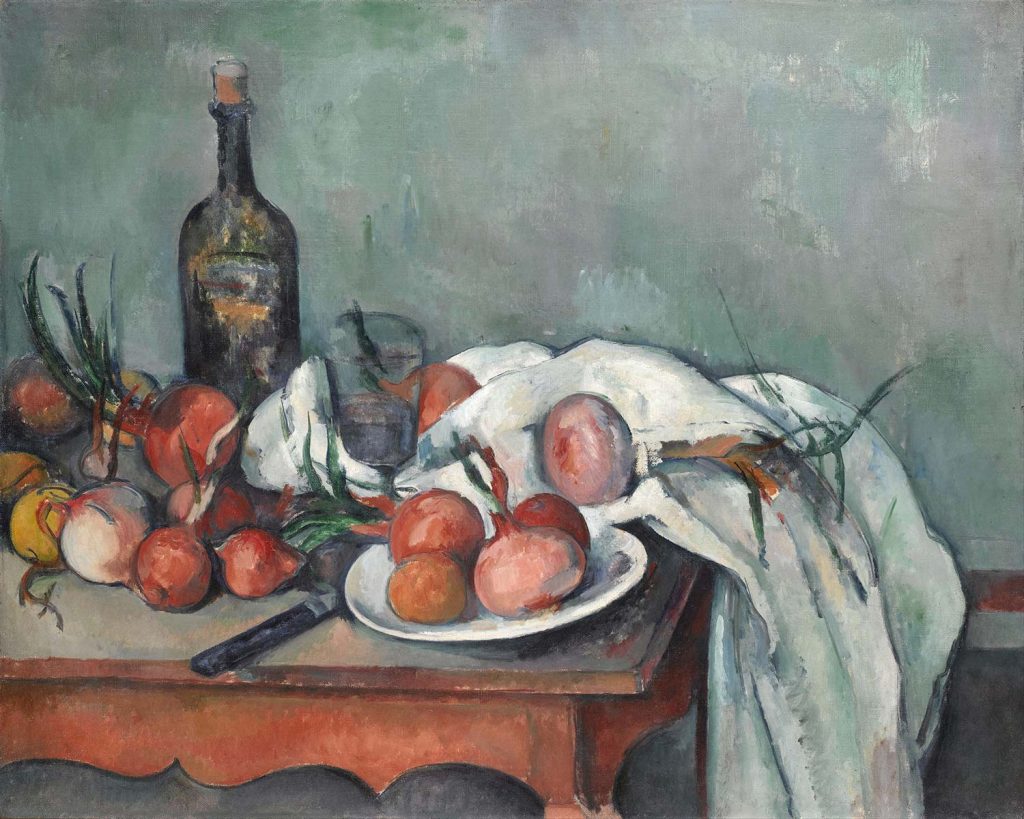
Still Life with Onions by Paul Cézanne was created in 1896 – 1898. The painting is in Musée d’Orsay, Paris. The size of the work is 66 x 82 cm and is made as an oil on canvas.
Alongside the onions, whose spherical shape was appropriate for Cézanne’s experiments into volume, he represents some simple objects. As well as the knife, there is a bottle, a glass and a plate. His repeated use of this type of article in his still life paintings reveals that the painter was focusing his interest on the layout of the objects, the treatment of space, and on studying the effects of light on shapes. On the table, as he often did in his later still lifes, Cézanne has introduced some drapery for decorative effect, which takes away the rigorously established construction. The fabric, like the bottle, stands out against a totally empty and neutral background, a factor that distinguishes this work from other, later still lifes, which are more crowded. (Read more in Musée d’Orsay)
About the Artist: French artist and Post-Impressionist painter Paul Cézanne was born in Aix-en-Provence. In Paris, Cézanne met the Impressionist Camille Pissarro. Initially, the friendship formed in the mid-1860s between Pissarro and Cézanne was that of master and disciple, in which Pissarro exerted a formative influence on the younger artist. Cézanne’s early work is often concerned with the figure in the landscape… Read more
You can order this work as an art print on canvas from canvastar.com

